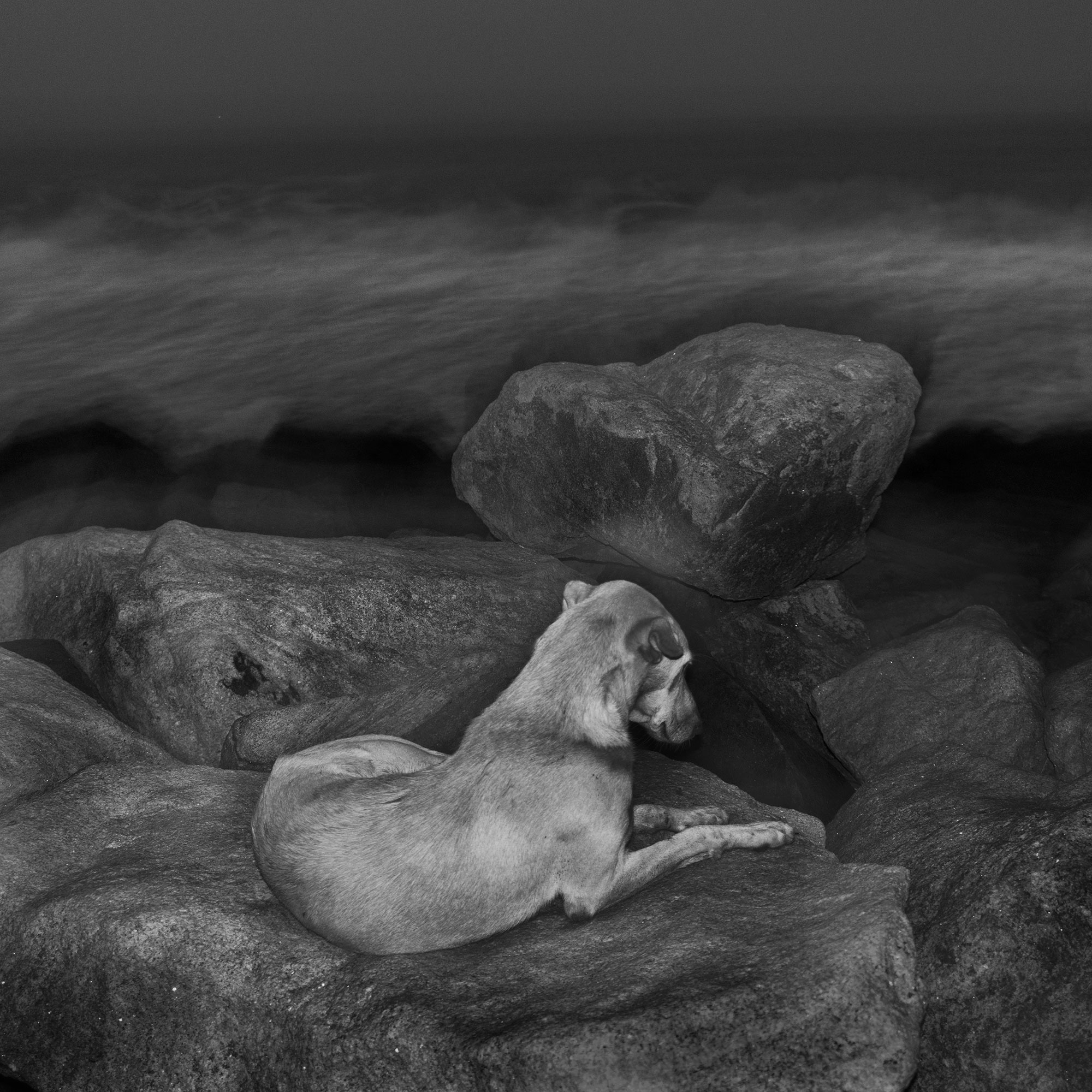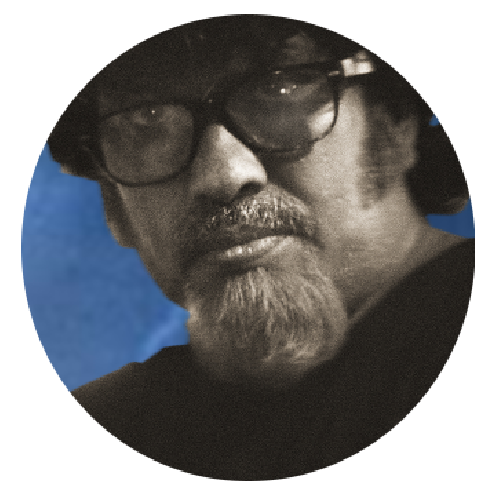Panorama
Metabolism of
Culture
Photo Mail presents
A panoramic view of
The art of photography’s
Interaction and
Interrelation with other
Art mediums such as literature
Architecture, and
Other visual media
A socio-anthropological reading
of Photographer Abul Kalam Azad‘s
Men of Pukar photo-series
which is the third part of his
Ongoing five-part series titled
Story of Love, Desire & Agony
that creates meta-conceptual
parallel visuals of Classical Tamil
epic tragedy Cilappathikaram
In MoC
the author seeks to understand
the origins of “Culture” and
the multi-fold assimilation
and manifestation
Of identity, territory, and gender

Men of Pukar | Story of Love, Desire and Agony © Abul Kalam Azad 2017
Photographs that capture time are in essence timeless. They give a feeling of perpetualness – as if there never was any moment before and there will never be any moment thereafter. And exactly when one is convinced of that single moment as the only moment, something contrary to this feeling of eternity arises. A linear projection onto the past and future of all lived moments becomes apparent in a fraction of a second – the time required to make a photograph using modern equipment that is way too fast and precise.
This particular image however, is made using a lo-fi camera. The long exposure gives the waves (or is it a stream of light?), a painterly feeling – the word painterly being used here for lack of better words. Indeed, it is not fitting to compare photography with painting – the critics apart, even the photo-connoisseurs, owing to their comparatively longer exposure to painting show the tendency to evaluate a photograph based on the standards of painting. While photographs that depict everyday life and normal circumstances create nostalgic memories or indifference, unfamiliar images evoke feelings of curiosity or surprise. Either way, a photograph is always taken to depict reality – even though it is more often not a true replica of truth. It is this nature of photographs that makes them earthly, while paintings are generally perceived to take one to the realm of dreams. This is why, when exposed to realistic paintings, the undoubting viewer proclaims, ‘Oh this looks like a photograph’, and shouts in excitement, ‘Oh this so much looks like a painting’, when exposed to a photograph that transcends its inherent earthly dimension, and shows certain elements or compositions that could not be perceived through real eyes.
Abul Kalam Azad’s works hang in that space that is earthly and ethereal at the same moment. A fisherman passing by, a farmer on his way to plough his land, a truck driver on his wheels, a Brahmin performing his pooja, a child playing on the sands, the ducks walking past, and so on, everyone interrupts daily routine for a few minutes, allowing the photographer to take a snap of theirs, and thus, letting them become one with the immortal image world. Their past, present and future, converge into a single pivotal moment that speaks volumes to the viewer, and at the same time nudges him/her to enter the world of silence.
In this photograph, the dog is reclining, at ease with his (or her) surroundings. From the look of its pose and ears that are hung down as against their alert mode, the dog appears to be in a relaxed mood. Surely, the presence of the photographer in such a close proximity is not causing any disturbance to him/her. Or, it is possible that it has already completed its investigation and after finding that there is nothing unusual, has decided to ignore the photographer. As one readjusts the focus to see the rocks, there is a sense of harmony between the still rocks and the still dog – as if the rocks have taken the hue from the dog to be all the more still. Just as the silence engrosses and embraces one into the magical world of the dogs and rocks, the restless movement of the waves causes a shrilling jolt that teleports one to a time before the scriptures.
Approximately 1,26,000 ± 5,000 years ago, well before cultivation began, humans befriended dogs or maybe it was vice versa. Either way, the wolf ancestors of dogs were the first of the species to be domesticated. They were naturally selected (as against artificial breeds) and the Indian Pariah dogs are considered one of the oldest such kinds in the world. As there is no concrete evidence as to when language originated, and as there can never be any direct evidence, nobody would ever know how humans communicated with the dogs during those days. What we know for sure is that they did communicate effectively and together shared a long history of evolution.
Some say that it was the “invitation” from the animals that encouraged humans to get close or keep away. Behaviors like eye contact, hanging out, act of following etc. must have developed a curiosity in the minds of the ancient humans, who were in any case keenly observing the wild animals – their survival challenges demanded them to be ever alert. With the watchful dogs by their side, the primitive hunters and gatherers were at a competitively advantageous position – and naturally, for them dogs were god-sent – well, god-sent is an erroneous word, as the word ‘god’ may not have been existence then, at least until language had taken a definite shape and even then their nascent ideas/concepts about the invisible force that controlled the unforeseen aspects of life may not have been complex and domineering as today. In any case, dogs were considered sacred and had played a central role in the life of humans, so did the other domesticated animals like buffaloes, pigs etc., which were raised with love and relished with equal affection. It was these animals that became iconographical and symbolic representations of the mythical, mythological, and folklore stories, and became significant during sacrificial rituals. This centrality of animals in the life of humans is what got depicted in cave paintings and other art forms.
Eventually, based on each tribe’s preferences, topography and lifestyle, some animals became totems, while certain others became a taboo. Taboos and Totems are means whereby society talks to itself, and they rarely have a straightforward utilitarian function. They are means through which one group marks itself distinctly different from that of the others. It is these very symbols and symbolisms that become ‘identity’ for that particular tribe. Everything about the group/tribe is programmed – their dress, food habits, rituals, taboos and in later days even the words they use or don’t. Or for that matter, their belongingness is ascertained by whether or not they take a bath after touching a dog.
Dogs, for example, are considered a taboo in Islamism. The Brahmins of India are required to take a shower every time they are touched by a dog. This is one of the ‘signs’ through which they proclaimed themselves ‘different’ and even ‘superior’ to the rest of the tribes. Scientific knowledge has little influence on issues pertaining to identity and religion, as primarily they were not adhered to for scientific reasons, but merely for bonding the clans/tribes together under the pretext of shared beliefs, that eventually became rigid dogmas.
There is an intrinsic conflict when anything becomes a totem to one and a taboo to another. But when seen objectively, these epical animals share one thing in common – mystical elements attributed to the tamable and productive or the untamable and powerful. The greater their contribution to humans survival and economic well-being, the more sacred they become.
In postmodern society, with the advent of machinations and other changes in lifestyle, most often the role of animals have been reduced to being food or pets and the fiery or rare wild animals have become live museum pieces in the zoos. After going through years of close association with humans, they have now come to a point of being either discarded or valued with a misplaced passion. In rural settings like Pukar, the scene is slightly different. Mechanization is yet to take its full swing here, and many activities are still carried out by these animals. Animals, especially the productive ones like the buffaloes, cows, goats, etc., continue to play a central role – economically and religiously. One could see several stucco sculptures of dogs in Pukar, often accompanying their protective deities in front of temple shrines. Dogs always played a major role in protection and hunting – a few even believed that dogs could recognise ghosts and protect the people from evil spirits. Ancient life in wilderness could lead to dynamic imagination and unrealistic concepts. Yet, even in contemporary times, these beliefs continue to exist and influence people and cultures. It is reflected in the continued presence of dogs in temple shrines – along with warrior deities whose bodies are depicted with full masculinity, vigor and vitality. In one of the temples in Pukar, there is an interesting stucco sculpture of a policeman with his dog – a curious representation of those who protect people from harm in contemporary times.
Animals are a recurring theme in Abul’s works. His obsession with animals is quite obvious. It is probably his lineage that developed such a lingering interest. But, his appreciation of dogs raises a few eyebrows – like most of the others who had migrated from the Horn of Africa, Abul’s family also had adopted Islamism. Probably, what started as an individual exploration into the religious dimensions of dogs and pigs, that were considered a taboo in his own family but a totem by other cults, has become a life-long passion for the artist. This could be the reason behind his interest in animals – specifically, animals in everyday life. Interestingly, apart from a brief period during his early career, he has shown a general disinterest in wildlife photography that largely pries into and eroticizes the private life of animals and birds. The everyday animals in his photographs, that are a common sight in India – becomes a representation of the sociological and cultural mindset of this ancient land.
The dog in the photograph has no collar or any such mark that proclaims ‘ownership’. It is not there to protect anybody. Nor does it have any serious hunting to do for some master. It also has not been pampered and protected with food and affection by a dog-lover. Indeed, he/she is a slave to none. It is free. Free to exist, like in ancient times – much before humans intervened and elevated them to be profound or discarded them as profane. Indeed, this dog has chosen liberty to servitude. And, it is not affected by the judgments that the humans have made on behalf of them. Subconsciously, Abul is connecting with these animals in their natural state, by consciously breaking free from the inhibitions imposed by his own early upbringings and social constructs – with the openness of an ancient mind, which is yet to categorize them as holy or unholy. Probably, it is his neutral mind that is devoid of judgment that makes it possible to achieve that perfect balance between movement and stillness that captures both the sounds and silences of a moment. There is a rhythm and playfulness in his use of shadow and light. Nonchalantly, the photographer blends into his surroundings, seizes the harmonies and patterns of nature that unleashes the not-yet-written tale of the journey of dogs that has interesting twists and turns like that of a novel. And, in the next moment, he pleads with the unsettled viewer to become still and conjugate with the stillness of the dog and the rocks. Once upon a time, was it not natural for us, the humans, to enter that space of communion with nature?
_________
[1]Why look at animals by John Berger

Tulsi Swarna Lakshmi is an independent writer and film-maker. She has more than a decade of experience working with leading National and International Non-Government Organisations in India, Africa, and South America. She is the Founder Managing Trustee of Ekalokam Trust for Photography and the Executive Editor of PhotoMail.

Abul Kalam Azad is an established contemporary Indian photographer, noted for his maverick experimental and conceptual works. He is the Founder Chairman of Ekalokam Trust for Photography. Abul’s photographic works are predominantly autobiographical and explore the areas of politics, culture, contemporary micro-history, gender, and eroticism. His works attempt a re-reading of contemporary Indian history – the history in which ordinary people are absent and mainly provided by beautiful images and icons. To see more works of Abul Kalam Azad check his website.
Published on September 6, 2022
Share
Related Articles

Stucco Sculpture, Pre-hisoric Memories and Conflict
As the tradition dictates, this stucco sculpture is not ‘signed’ by anybody either, even though it is not that old. Stucco techniques have been known to sculptors for millennia. Some historians opine that the pyramids were plastered white. The Greeks and Romans are known to have used stucco in constructions and sculptures. It must be during this period that Sangam era Tamils (the predecessors of modern south Indians) learned this technique, through maritime traders.

